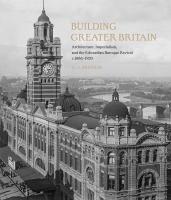Description
The Edwardian Baroque was the closest British architecture ever came to achieving an "imperial" style. With the aim of articulating British global power and prestige, it adorned civic and commercial structures both in Britain and in the wider British world, especially in the "white settler" Dominions of Australia, New Zealand, Canada, and South Africa.
Evoking the contemporary and emotive idea of "Greater Britain," this new book by distinguished historian G. A. Bremner represents a major, groundbreaking study of this intriguing architectural movement in Britain and its empire. It explores the Edwardian Baroque's significance as a response to the growing tide of anxiety over Britain's place in the world, its widely perceived geopolitical decline, and its need to bolster confidence in the face of the Great Power rivalries of the period. Cross-disciplinary in nature, it combines architectural, political, and imperial history and theory, providing a more nuanced and intellectually wide-ranging understanding of the Edwardian Baroque movement from a material culture perspective, including its foundation in notions of race and gender.
Distributed for the Paul Mellon Centre for Studies in British Art
Product Details
- Paul Mellon Centre Brand
- Jan 10, 2023 Pub Date:
- 1913107310 ISBN-10:
- 9781913107314 ISBN-13:
- English Language
- 11.65 in * 1.18 in * 10 in Dimensions:
- 1 lb Weight:




